NO TIME TO DIE Countdown: DIE ANOTHER DAY Revisited
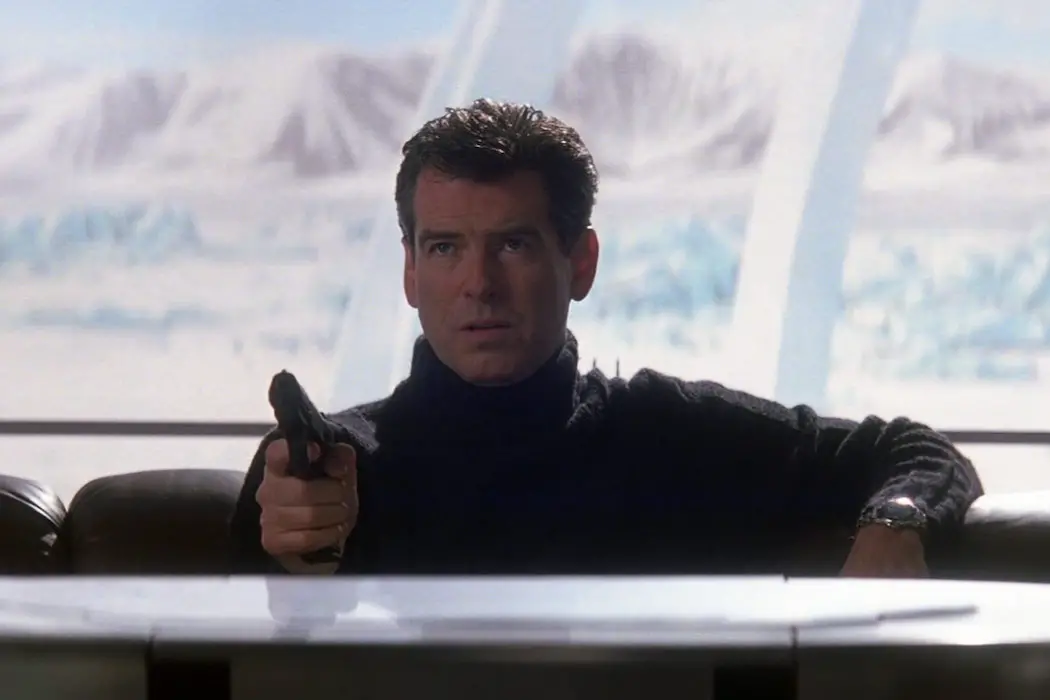
Movie lover & Los Angeles-based writer. BA in Film Criticism…
In the No Time To Die Countdown, Jake Tropila takes a look back at every Bond film – official and unofficial – in anticipation of the release of the latest entry.
Alright, before you start laughing, let’s talk about closure. To date, no Bond Actor has ever received a fitting “end” to their term as 007. Connery summarily quit after You Only Live Twice, was bribed back for another go with Diamonds Are Forever, then re-quit the official series, and re-reported for duty one final time with Never Say Never Again (over a decade later and under a rival studio, I might add). Moore operated past his expiry date; he recognized his time had come while shooting A View to a Kill, and left the series after that without much in the way of pomp and circumstance. And Lazenby and Dalton’s services were terminated nearly as soon as they started.
That’s all set to change with the release of No Time To Die. Daniel Craig has officially served the longest tenure as James Bond, with his fifteen years surpassing Moore’s record of twelve. And for the first time ever, his next film was forged with the promise to be his last, purporting to be an “epic conclusion” to his story, if the marketing is to be believed. How exactly this will all play out has yet to be determined (the release date is still a few weeks away at the time of this writing), but suffice to say I am eagerly looking forward to seeing how it all goes down.
I’m getting ahead of myself — let’s shift the focus back to Brosnan. Die Another Day was intended to be a momentous occasion in the Bond universe. The 20th film, released on the 40th anniversary of the franchise’s start date, Die Another Day was a celebration of all things Bond, densely packed with references, call-backs, and homages to the nineteen films that came before it. Boasting the largest budget to date and smashing box office records in return, the film was in love with Bond as much as it was in love with itself. It also has a reputation for being the worst film in the series.
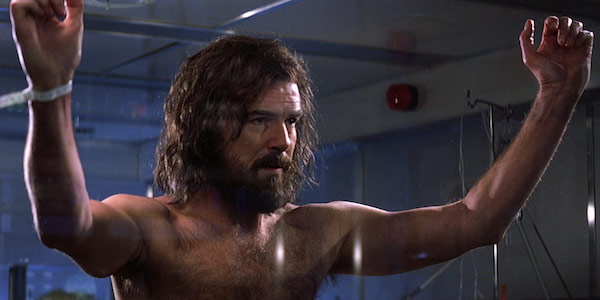
But is it really the worst? “Wait a minute!” you pre-emptively cry out. “We tolerated your defenses of Diamonds Are Forever and A View to a Kill, but there’s no chance we’ll let this one slide.” Look, I get it, you hate this movie, and want nothing more than to see it pilloried in this column. I understand why Die Another Day is perceived as horrendous. But it is a sentiment I cannot share – not entirely, anyways. Revisiting the film again, I found that a sizable portion of it does carry itself relatively well. It does eventually turn into hokum, but even then, I don’t think it stings as badly as you might believe. I have my reasons, let’s find out why. Hop in my Aston Martin Vanish, dear readers. It’s 2002. Bond has entered the new millennium.
How’s that for a punchline?
I cannot think of a moment that announces a Bond film’s true intentions more pointedly than Die Another Day’s gun barrel sequence. We get our traditional setup: in a digitally-rendered pinhole, Brosnan emerges from the right-hand side of the screen, takes a few steps forward, turns, and fires at an unseen assassin. However, his gunshot is accompanied by an enormous, computer-generated bullet that flies straight at the viewer through the actual gun barrel. Right off the bat, Die Another Day announces itself as a bigger, brasher, and more CGI-ier entry than its predecessors. Buckle up, kids. This ain’t your daddy’s Bond.
More silliness immediately ensues with our first encounter of Bond, doing what he does best: stealth surfing into North Korea. Perhaps more than any other film in the series, Die Another Day suffers the most from being a product of its era. The film’s director, Lee Tamahori, really ups the visual sheen of the film, making this ostensible spy thriller feel less like From Russia With Love and more like The Fast and the Furious (the excessive color-grading is particularly egregious — North Korea is reduced to a desaturated hellscape of gunmetal grey).
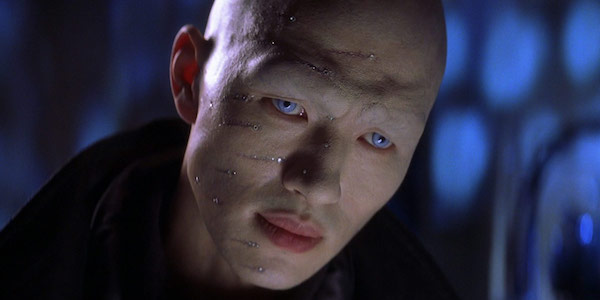
Already I feel like I’m being too hard on this. Bond’s meeting with Colonel Moon and Zao is sufficiently lively, and I really like the setup of Bond hiding C-4 in the case of diamonds before blasting shards of them into Zao’s face (it’s really a shame the title Diamonds Are Forever was taken). The hovercraft chase works too. Flamethrowers, land mines, and scores of gunfire cannot seem to halt Bond, who sends poor Colonel Moon over the side of a waterfall. I’ve knocked bad puns before, but even I have some begrudging respect for “saved by the bell.” Bond getting captured is a nice twist, as is having him tortured over a period of fourteen months. Bond always escapes – this film dares to dream big! How about that. Onto the song.
Look, I’m in no position to defend Madonna’s title track. It’s a bizarre, techno-infused whatsit that is virtually beyond any real comprehension. You could argue that the film and song deserve each other – I won’t disagree. What I’m mostly tickled at is the fact that the song plays over sequences of Bond’s torture; did nobody working on the film stop to consider this? So much for subtext. At least David Arnold dutifully returns for scoring duties. The Bond theme reaches some bombastic highs here.
The more Die Another Day unfolds (unravels?), the more it starts to feel like a missed opportunity. Having Bond released only as part of a prisoner exchange for Zao, and then having him go rogue to hunt down and assassinate the North Korean terrorist teases us with what could have been Brosnan’s Licence to Kill. Alas, the gods would not allow it. At least we get to see Bond stop his own heart to escape MI6’s custody. Takes superhuman to a new level.
A quick bath and a shave later and Bond is right as rain. You’d think that spending months of having scorpion venom and anti-venom injected into the bloodstream would have a more adverse effect on our worldly agent, but this film has no time for anything as sound as logic. Plus, I’m still at the point where I’m having fun – none of this would seem out of place in a Roger Moore film. Onto Cuba.
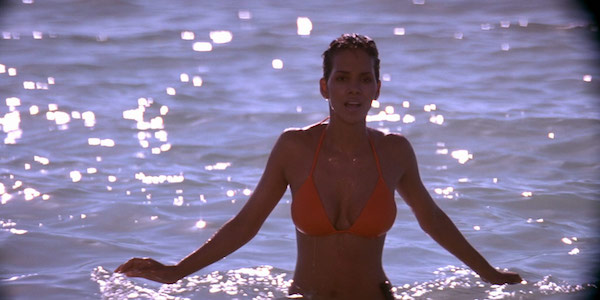
Try as she might, Jinx is no Honey Ryder. Brosnan’s Women break into two groups: civilians caught up in action, and friendly agents fighting for the same cause. Jinx’s NSA agent falls squarely in the latter category, and the success of this film was so wild that she was even considered to get her own spin-off film. I cannot even fathom what that might have been like. Much like Christmas Jones, Jinx is not fondly remembered by fans. Also like Christmas Jones, this is not Halle Berry’s fault. The problem is in the writing: about halfway through the film, Jinx speaks in nothing but lame witticisms, reducing the character to a walking joke machine. So much for agency.
Cuba is a nice showcase for Brosnan’s Bond. He drinks mojitos on the beach, punches out an obnoxious tourist, and infiltrates a shady medical facility. It is there that he discovers Zao, who is undergoing some extensive gene therapy to alter his image into that of a Caucasian male. That can’t possibly pay off later. Bond and Zao’s scuffle that leads to Zao’s chase and escape off the island is a diverting little set-piece; at the very least, it still feels like we’re still on earth.
Time to Face Destiny
Enter Gustav Graves. I really like this guy. English, c*cksure, snarling – Toby Stephens plays him at just the right register. Sure, his ultimate scheme is brainless, but until then, he’s having plenty of fun devouring the scenery, which is definitely more than welcome here. His extended swordfight with Bond is one of the film’s highlights; I absolutely love how their “friendly” competition devolves into a big-dick “first blood at the torso” contest colored by bloodlust and rage, spilling out of the fencing studio (hello, Madonna!) and into the courtyard.
The virtual reality raid on MI6 seems to exist solely for the purpose of first-time viewers. The façade crumbles almost immediately – there’s no chance Bond wouldn’t stop to mourn Moneypenny’s death – but I still like the fleeting glimpse of Bond defending his office from heavily armed commandos. And try as he might, John Cleese is no Desmond Llewelyn. Q’s mannerisms were a natural part of Llewelyn’s persona; Cleese is just playing a goofy character, which means he’s right at home in this movie. And, for hardcore fans: see how many gadgets you can spot in Q’s lab.
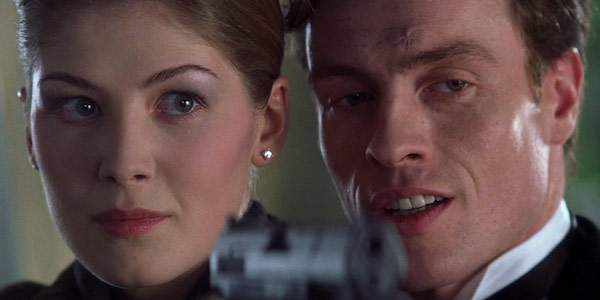
Okay, right around here is where things go from decent to awful. The invisible Aston Martin is mostly terrible (it’s almost never used for that purpose), but the ice palace feels like the point of no return. Graves is hosting a demonstration for Icarus, his reflective satellite built for the express purpose of lighting up the darkest parts of the world. But mostly, it’s just used as an outer space laser to zap areas of the world he’s exceedingly unhappy with.
This is an astonishingly mad accomplishment for a generally well-respected and knighted Englishman, but the truth is, Graves is no Englishman at all – he’s actually Colonel Moon, the North Korean baddie Bond seemingly killed in the pre-title sequence. Through extensive DNA replacement therapy, Moon grew a foot taller and was reborn as Graves, who intends to invade South Korea from the North using his brand new solar-powered satellite. Oh, and he somehow accomplished all of this in the fourteen months Bond was being tortured. Yeah, sure, okay.
Unfortunately for Graves, Bond has arrived at his ice palace to stop him. Unfortunately for Bond, he slept with Graves’ woman, Miranda Frost, who rudely unloaded his gun before their encounter. Unfortunately for Frost and Graves, Bond escapes in Graves’ rocket car. The nadir of the Bond franchise arrives in the ensuing sequence, where Graves attempts to obliterate Bond with the power of Icarus, and Bond escapes by surfing off a waved caused by a collapsing glacier. I’ll let the film speak for itself.
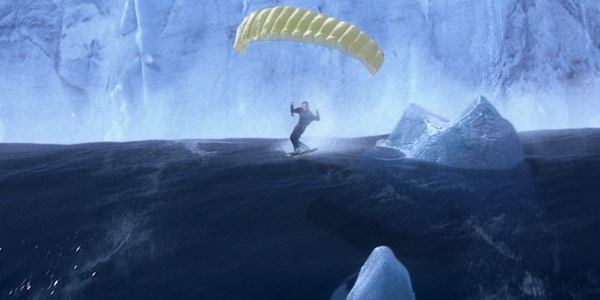
Oh yeah, Jinx is at the Ice Palace too. Gross coincidences are all too common for Bond – nature of the beast, I suppose. In a reverent homage to Goldfinger, Jinx is captured and strapped to a table as a slow-moving laser inches towards her neck. Bond arrives to rescue her, but a henchman named Mr. Kil (“Now there’s a name to die for”) tussles with Bond and causes the controls of the laser to go haywire, transforming the scene into some kind of wacky laser disco. Long story short, Mr. Kil earns his namesake with a well-placed laser to the back of his skull. Ouch.
For as much grief as I’ve given the latter half of Die Another Day, I do immensely enjoy the spy vs spy car chase that pits Zao’s emerald green Jaguar against Bond’s Aston Martin with a malfunctioning invisibility setting. This extended stunt show hits the right pitch, as both vehicles are heavily outfitted with missiles and dodging each other on the icy landscape. Bonus points to Zao for receiving such a gruesome death (though Bond could have easily just shot him instead of shooting a chandelier to fall on him).
The finale on the plane is an excuse to tack on another twenty minutes to the film. Everything could have been resolved at the ice palace, but instead, we must take to the skies for a bigger and even more explodier showdown. The Graves/Moon family reunion falls completely flat, despite being established as the emotional crux of the villain’s raison d’être. Our villains end up getting dispatched with respective one-liners – Miranda Frost takes a sword to the chest (“I think I broke her heart!”) and Graves gets sucked out of his own plane into the jet engine (“Time to face gravit!”) – and Bond and Jinx happily canoodle in a large pile of diamonds. The end.
Conclusion: Die Another Day
Did Pierce Brosnan get the final entry he deserved? Yes and no. I’ve mentioned before that I consider him to be the most “balanced” Bond, extremely capable in many areas without ever quite excelling in any of them. But the films themselves got too big, too out of control. Die Another Day is largely overblown with no real sense of closure, and the series needed to undergo some massive DNA replacement therapy before it was fit for duty once again. Unfortunately for Brosnan, he got caught in this crossfire, resulting in his tenure fizzling out rather than concluding with a bang. The quality of his films widely varied, but Brosnan never lost his sense of fun, and absolutely deserved a fonder farewell than this. When I think of him, I think of the good times. So, thank you Pierce. Thank you for your service.
Coming up next: it’s time to go back. Back to where it all began. The No Time To Die Countdown will return with Casino Royale.
Watch Die Another Day
Does content like this matter to you?
Become a Member and support film journalism. Unlock access to all of Film Inquiry`s great articles. Join a community of like-minded readers who are passionate about cinema - get access to our private members Network, give back to independent filmmakers, and more.
Movie lover & Los Angeles-based writer. BA in Film Criticism & Media Theory from CSU Northridge. Unofficial Bond ally. Rhymes with “tequila.”













